Active filters:
- Remove this filter Category: Agronomy & Horticulture
Available filters Toggle display
- Price
Publications
Need to be tax-exempt?
Contact Laura Tharnish before ordering.
ltharnish2@unl.edu or 402-472-1576
-
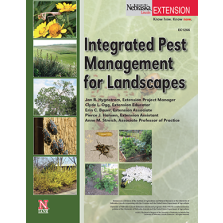
Integrated Pest Management for Landscapes
$3.00Chances are good that gardeners will have to deal with some type of pest during the year, whether that pest is a flea beetle chewing holes in a potato leaf, rabbits nipping lilies, dandelions invading the lawn, or early blight on tomatoes. Integrated Pest Management (IPM) is a strategy that uses a combination of methods to manage pests to avoid unacceptable damage while also protecting the health of humans, pets, and other nontargets, and the environment. Learn More -
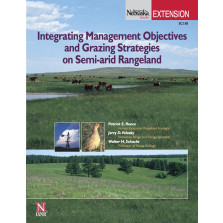
Integrating Management Objectives and Grazing Strategies on Semiarid Rangeland
$2.00Rangelands account for almost half of Nebraska's 24 million acres. Much of these expansive natural resource areas are in the semi-arid climatic region of Nebraska where grazing management decisions have a profound effect on ranch survival. This circular covers management practices that optimize the sustainability of rangeland and includes a decision-support tool for selecting grazing systems best suited to management objectives. Includes a chart of how differences in repoduction schedules, initial livestock weigh, and/or average daily gain affect animal unit equivalents in cow-calf and yearling enterprises.
Topics include:
- Importance of a grazing strategy – how to develop one and what to include
- Characteristics of various grazing systems, including season-long continuous, rest-rotation, deferred rotation, intensively managed
- How to select the best grazing system for your conditions and operation
- Best management practices
- Stocking rate adjustments
- Critical plant and animal interactions
- Evaluating a grazing plan
- Livestock production criterion
- Understanding and optimizing hydrologic condition of rangeland
- Planning for upland game birds
- Relative values of pastures
- Evaluating the likelihood of various systems to achieve specific management objectives
-
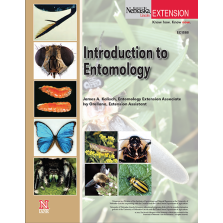
Introduction to Entomology
$4.25More than 100,000 insect species live in North America, and there are more than 1,000 insects in a typical backyard at any given time. This full-color introductory entomology guide includes close-up photos of insects and their body parts. Learn More -
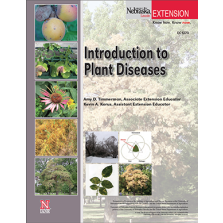
Introduction to Plant Diseases
$2.25An introduction to plant diseases for gardeners and landscape managers, this publication describes the types of plant diseases and life cycles, how to recognize disease, and the the best treatment methods. Learn More -
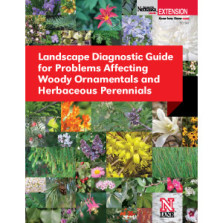
Landscape Diagnostic Guide for Problems Affecting Woody Ornamentals and Herbaceous Perennials
$15.00This guide provides information on problems commonly associated with woody and herbaceous perennials of the upper Midwest. For each problem/pest there is a photo to aid in identification and detailed information on when and where the problem or pest is likely to be observed, signs and symptoms of activity, and treatment methods. Charts for each plant type help identify pests most likely to be causing damage at that time in the season on a specific area of the plant. For example, the chart for the daylilly entry indicates that damage to the flower between May 1 and May 10 would most likely be caused by thrips. Below the chart is information on the identification and treatment of thrips.
196 pages, coil bound, full color images throughout
Learn More -
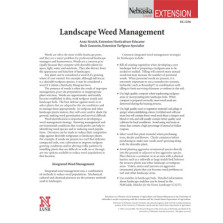
Landscape Weed Management
$1.50Weeds are often the most visible landscape pests and a major problem for professional landscape managers and homeowners. Weeds compete with desirable plants for space, light, water, and nutrients and detract from the appearance and function of landscapes.
This 8-page guide covers common:
- Integrated weed management strategies for landscapes;
- Recommendations for how best to use herbicides as part of an integrated plan;
- A table of common landscape weeds, including where they’re typically found and recommended timing of control;
- Photographs of 32 common weed species to aid in identification for more effective control.
-
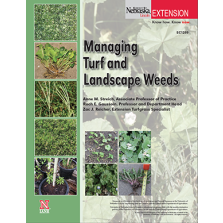
Managing Turf and Landscape Weed
$3.00Weeds that compete with desirable plants for space, light, water, and nutrients can be controlled with an integrated weed management plan. Learn More -
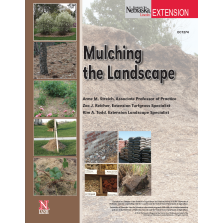
Mulching the Landscape
$2.25Inorganic and organic mulches can benefit a lawn, garden or field but must be understood before use, if gardeners and landscapers want the best results. Learn More -
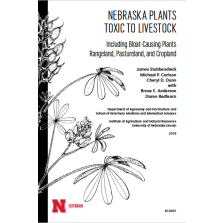
Nebraska Plants Toxic to Livestock
$12.50This Extension book covers the identification and toxic properties of 113 species growing on Nebraska prairies, rangelands, and pasturelands. When plants are toxic, toxic parts, and animal treatment and management are presented. Additionally, the publication includes 30 crops grown in Nebraska that may cause poisoning. Learn More -
![Nebraska Soybean Aphid Management [DVD]](https://marketplace.unl.edu/media/catalog/product/cache/7/small_image/223x/9df78eab33525d08d6e5fb8d27136e95/s/o/soybean_aphid_dvd.jpg)
Nebraska Soybean Aphid Management [DVD]
$8.00This DVD includes the basics of soybean aphid management.
Topics Include:
- Aphid Facts
- Scouting Tips
- Aphid Identification
- Management Tips
Run Time: 12 minutes.
Learn More